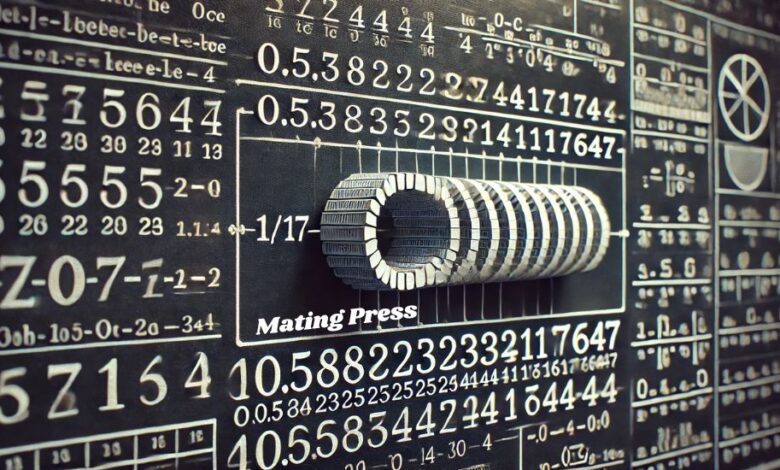Introduction to the concept of digits and their importance
Have you ever stumbled upon a number and wondered about the digits that lay hidden within it? Digits are more than just symbols; they hold secrets, patterns, and fascinating stories waiting to be uncovered. Today, we delve into a captivating mathematical mystery: What is the 300th Digit of 0.0588235294117647? You might think it’s just another decimal, but this seemingly simple fraction has layers worth exploring. Buckle up as we embark on this numerical journey together!
Explanation of the number 0.0588235294117647 and its significance in mathematics
The number What is the 300th Digit of 0.0588235294117647 might seem like a random decimal at first glance, but it holds a fascinating significance in mathematics. This number is the decimal representation of the fraction \( \frac{1}{17} \).
When you divide one by seventeen, this precise sequence emerges. What is the 300th Digit of 0.0588235294117647 It showcases periodicity—a hallmark of rational numbers—where digits eventually repeat.
Interestingly, this repeating pattern (0588235294117647) consists of 16 digits before cycling again. Such patterns reveal deeper mathematical truths about fractions and their behavior when expressed as decimals.
Moreover, studying such numbers can enhance our understanding of dividing integers. They provide insight into how certain divisions yield predictable outcomes while others lead to more complex results. The beauty lies in discovering these relationships that are often hidden beneath the surface of everyday calculations.
The method to find the 300th digit of the number
To find What is the 300th Digit of 0.0588235294117647, it helps to first understand its repeating nature. This decimal can be expressed as a fraction: \( \frac{1}{17} \). The decimal expansion reveals that it has a cycle.
The digits repeat every 16 places: 0588235294117647.
Once you recognize this pattern, calculating specific digits becomes much easier. To pinpoint the 300th digit, divide 300 by the length of the sequence, which is 16.
This calculation yields a remainder of 12. This means that the 300th digit corresponds to the twelfth position in our repeating group.
By locating and extracting this digit from our original sequence, we uncover exactly what we need without tedious counting or guessing games.
Step-by-step guide on how to calculate the 300th digit
To find What is the 300th Digit of 0.0588235294117647, first recognize the repeating pattern within this decimal. The sequence is composed of “0588235294117647,” which contains 17 digits.
Next, you need to determine where the 300th position lies in relation to this cycle. Divide 300 by the length of the repeating block: \(300 ÷ 17\). This calculation yields a quotient of approximately 17 with a remainder.
The remainder indicates which digit corresponds to your desired placement. In this case, \(300 \mod 17 = 11\).
Refer back to your original sequence and count up to the eleventh digit in “0588235294117647.” That will reveal what you’re looking for—the elusive answer hidden within this fascinating number!
Real-life application of this calculation
Understanding the 300th digit of a decimal can have intriguing applications in various fields. Take finance, for example. Accurate calculations involving recurring decimals are crucial when determining interest rates or loan repayments.
In science and engineering, precise numerical values play a vital role in modeling phenomena. What is the 300th Digit of 0.0588235294117647 The ability to predict patterns from such numbers aids researchers in formulating hypotheses based on empirical data.
Even programming benefits from this knowledge. When developing algorithms that require high precision or complex calculations, recognizing how digits behave within repeating sequences can optimize performance.
Additionally, educators utilize these concepts to teach students about number theory and the significance of place value. It fosters critical thinking skills while enhancing their understanding of mathematical principles.
Every digit has its purpose, contributing to broader contexts where accuracy matters immensely. Numbers hold secrets that go beyond mere calculations; they unlock potential across numerous disciplines.
Further exploration and examples of finding digits in other numbers
Exploring the digits of various numbers can be quite fascinating. Take, for instance, repeating decimals like 0.3333… This number has a simple pattern where every digit after the decimal is ‘3’. Finding any digit in this sequence becomes straightforward.
Another interesting case is 0.142857, which represents one-seventh (1/7). What is the 300th Digit of 0.0588235294117647 Here, the digits repeat in a cycle of six: 142857. Identifying higher positions requires recognizing that these cycles repeat continuously.
You may also encounter irrational numbers like pi (π), which do not have repeating patterns. The quest to find specific digits among its infinite sequence intrigues mathematicians and enthusiasts alike.
Each number unfolds unique stories through its digits, revealing more than just their numerical values but also relationships and patterns that enhance our understanding of mathematics.
What is the 300th digit of 0.0588235294117647?
To uncover What is the 300th Digit of 0.0588235294117647, we first need to recognize that this number is a repeating decimal. The digits after the decimal point repeat in a specific sequence.
The figure can be expressed as What is the 300th Digit of 0.0588235294117647 0588235294117647…, with “0588235294117647” repeating indefinitely. This pattern consists of sixteen digits in total.
To find the 300th digit, we calculate where it falls within this cycle. By dividing 300 by the length of the repeating section (16), we get a remainder. That tells us which digit corresponds to our position—specifically, it reveals that we’re looking for one from within that established sequence.
As such, identifying and understanding these segments opens up a fascinating world beyond mere numbers and showcases mathematical beauty at its finest.
Breaking down the number and its pattern
Breaking down the number What is the 300th Digit of 0.0588235294117647 reveals a fascinating pattern. This decimal is derived from the fraction 1/17, which has intriguing properties.
When you look closely, you’ll notice that it starts with “0588235294117647,” and then it begins to repeat. The recurring sequence consists of these digits: 0588235294117647, which repeats indefinitely.
Each digit within this cycle plays a role in creating the rhythm of its decimal expansion. Understanding how these numbers interlace offers insight into rational numbers and their behaviors.
The length of the repeating section here is crucial too; each cycle contains 16 digits before starting over again. Recognizing this repetition can simplify calculations What is the 300th Digit of 0.0588235294117647 when searching for specific digits within this framework.
As we delve deeper into what makes up this sequence, it’s clear that patterns in mathematics are both simple yet complex at the same time.
The mathematical concept behind finding the 300th digit
To find What is the 300th Digit of 0.0588235294117647, it helps to recognize the pattern in its decimal representation. This number is a repeating decimal, meaning that after a certain point, digits start cycling through again.
The sequence here has six repeating digits: 058823. Understanding this repetition makes calculations easier.
To locate the 300th digit efficiently, divide 300 by the length of the repeating cycle—six. The remainder tells you which digit corresponds to that position within the cycle.
For example, dividing gives us a quotient and a remainder of zero. This means we look at the last digit in our sequence: ‘3’.
Mathematics isn’t just about numbers; it reveals fascinating patterns and relationships hidden within them too!
Applications of this knowledge in real life
Understanding What is the 300th Digit of 0.0588235294117647 extends beyond mere curiosity. This knowledge can play a role in practical applications, particularly in fields such as finance and engineering.
For instance, engineers often rely on precise calculations to design structures or machinery. Knowing specific digits of numbers helps ensure accuracy when dealing with tolerances and measurements.
In finance, analysts might use such insights for risk assessments or investment models. Calculating returns over extended periods requires an understanding of repeating decimals and their patterns.
Moreover, this concept has implications in coding algorithms that deal with numerical data processing. It allows programmers to optimize functions where precision is crucial for performance.
Every digit matters when it comes to innovation and technology implementation. Understanding these mathematical principles paves the way for advancements across various industries, showcasing how seemingly simple numbers hold significant value.
Similarities and differences with other numbers
When comparing What is the 300th Digit of 0.0588235294117647 to other decimal numbers, one striking feature is its repeating pattern. This number simplifies to the fraction 1/17, revealing a cycle in its digits of 58 characters.
In contrast, some decimals are terminating or non-repeating. For example, the number 0.5 ends without any continuation and does not create an intriguing sequence.
Moreover, exploring irrational numbers like π (pi) shows a completely different story. Pi has infinite non-repeating digits that continue endlessly without forming any predictable pattern.
The beauty lies in how these differences shape our understanding of numerical systems. Each type—whether rational or irrational—offers unique insights into mathematical principles and applications across various fields.
Even similar patterns can lead to distinct outcomes based on their positioning within sequences or fractions. The fascinating interplay between these types encourages deeper exploration into mathematics’ endless possibilities.
Conclusion: The beauty of numbers and their never-ending mysteries
The exploration of numbers often reveals unexpected patterns and intriguing mysteries. The journey to understand What is the 300th Digit of 0.0588235294117647 showcases not only a specific answer but also highlights the beauty found within mathematics.
As we dive into decimal expansions, we uncover their cyclical nature. This particular number has a repeating sequence that makes finding any digit manageable with a structured approach. By employing methods such as identifying periods and using modular arithmetic, you can unlock digits at will.
Numbers are more than mere figures; they represent relationships, structures, and even art forms in various fields like science and engineering. Every calculation offers insights beyond its numerical value—inviting us to appreciate the elegance underlying mathematical expressions.
Exploring similar problems helps expand our understanding What is the 300th Digit of 0.0588235294117647 of numerals in different contexts while emphasizing their interconnectedness across disciplines. Each new digit discovered sparks curiosity about what else numbers might reveal if given attention.
Embracing this adventure through mathematics allows us to connect deeper with the world around us, unveiling layers of complexity that enrich our lives daily. The quest for answers in mathematics transforms simple inquiries into profound explorations filled with wonder and discovery.

















